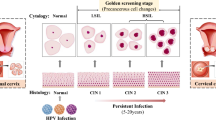Abstract
Cervical cancer must be detected at an earlier stage since the late diagnosis reduces the probability of survival among the women population of the world. In this paper, improved normalized graph cut with generalized data for enhanced segmentation (INGC-GDES) mechanism was proposed for effective detection of the cytoplasm and nucleus boundary of the pap smear cell in order to detect the cervical cancer in an optimized manner. This proposed INGC-GDES approach is implemented over the pap smear cervix cells in order to analyze its hazy and overlapping boundaries for superior detection of cervical cancer cells. In this INGC-GDES approach, the preprocessed cervical image is converted into an improved normalized graph cut set for combining the merits of spatial and intensity information related to the processed image used for analysis. The method of maximum flow algorithm is applied over the derived normalized graph cut set for determining the optimal pixel points that aid in superior detection of cervical cancer. The results of the proposed INGC-GDES mechanism is determined to be predominant in enhancing the classification accuracy rate by 28% superior to the investigated graph cut-based segmentation approaches.






Similar content being viewed by others
References
Kindermann G (1992) Problems in the early detection of cervical cancer. Cancer Diagn 1(1):70–77
Gençtav A, Aksoy S, Önder S (2012) Unsupervised segmentation and classification of cervical cell images. Pattern Recogn 45(12):4151–4168
Song Y, Zhang L, Chen S, Ni D, Lei B, Wang T (2015) Accurate segmentation of cervical cytoplasm and nuclei based on multiscale convolutional network and graph partitioning. IEEE Trans Biomed Eng 62(10):2421–2433
Nayar R, Wilbur DC, Solomon D (2008) The bethesda system for reporting cervical cytology. Compr Cytopathol 1:77–90
Binaghi E, Omodei M, Pedoia V, Balbi S, Lattanzi D, Monti E (2014) Automatic segmentation of MR brain tumor images using support vector machine in combination with graph cut. Proc Int Conf Neural Comput Theory Appl 2(1):56–67
Zhang L, Sonka M, Lu L, Summers RM, Yao J (2017) Combining fully convolutional networks and graph-based approach for automated segmentation of cervical cell nuclei. In: 2017 IEEE 14th international symposium on biomedical imaging (ISBI 2017)
Marinakis Y, Marinaki M, Dounias G, Jantzen J, Bjerregaard B (2009) Intelligent and nature inspired optimization methods in medicine: the pap smear cell classification problem. Expert Syst 26(5):433–457
Biscotti CV, Dawson AE, Dziura B, Galup L, Darragh T, Rahemtulla A, Wills-Frank L (2005) Assisted primary screening using the automated ThinPrep imaging system. Am J Clin Pathol 123(2):281–287
Plissiti ME, Nikou C, Charchanti A (2011) Combining shape, texture and intensity features for cell nuclei extraction in pap smear images. Pattern Recogn Lett 32(6):838–853
Zhang L, Kong H, Ting Chin C, Liu S, Fan X, Wang T, Chen S (2013) Automation-assisted cervical cancer screening in manual liquid-based cytology with hematoxylin and eosin staining. Cytometry A 85(3):214–230
Bergmeir C, García Silvente M, Benítez JM (2012) Segmentation of cervical cell nuclei in high-resolution microscopic images: a new algorithm and a web-based software framework. Comput Methods Programs Biomed 107(3):497–512
Marinakis Y, Dounias G, Jantzen J (2009) Pap smear diagnosis using a hybrid intelligent scheme focusing on genetic algorithm based feature selection and nearest neighbor classification. Comput Biol Med 39(1):69–78
Chankong T, Theera-Umpon N, Auephanwiriyakul S (2014) Automatic cervical cell segmentation and classification in pap smears. Comput Methods Programs Biomed 113(2):539–556
Zhang L, Kong H, Chin CT, Liu S, Chen Z, Wang T, Chen S (2014) Segmentation of cytoplasm and nuclei of abnormal cells in cervical cytology using global and local graph cuts. Comput Med Imaging Graph 38(5):369–380
Zhang L, Kong H, Liu S, Wang T, Chen S, Sonka M (2017) Graph-based segmentation of abnormal nuclei in cervical cytology. Comput Med Imaging Graph 56(1):38–48
Author information
Authors and Affiliations
Corresponding author
Additional information
Publisher’s Note
Springer Nature remains neutral with regard to jurisdictional claims in published maps and institutional affiliations.
Rights and permissions
About this article
Cite this article
Rajarao, C., Singh, R.P. Improved normalized graph cut with generalized data for enhanced segmentation in cervical cancer detection. Evol. Intel. 13, 3–8 (2020). https://doi.org/10.1007/s12065-019-00226-5
Received:
Revised:
Accepted:
Published:
Issue Date:
DOI: https://doi.org/10.1007/s12065-019-00226-5




